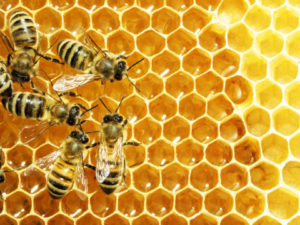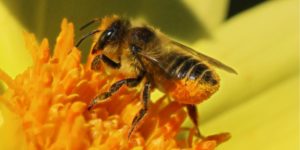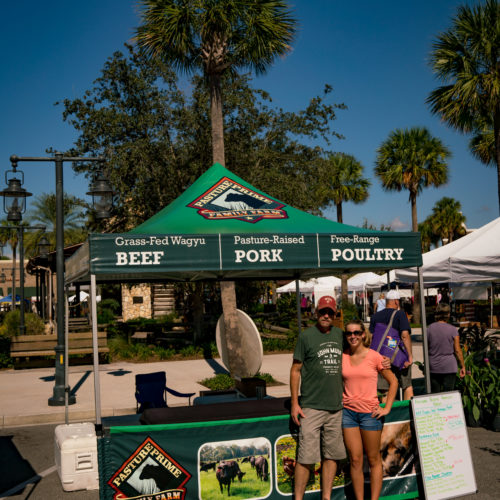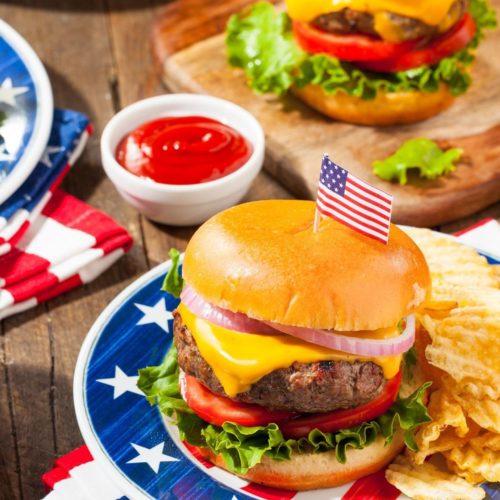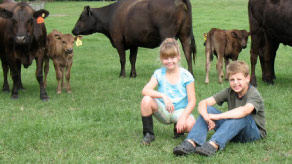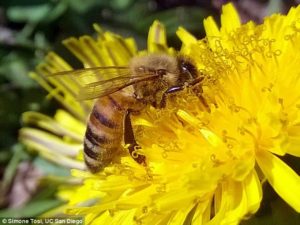
To make a prairie it takes a clover and one bee,
One clover, and a bee.
And revery.
The revery alone will do,
If bees are few.
–Emily Dickinson
So, I hate to start things off by saying Emily Dickinson—nature lover, visionary, and poet extraordinaire—was wrong. But…well…Emily Dickinson was wrong. Like, completely wrong. Honeybees play an essential role in the production of both our prairies and our food—a role that a simple “revery” (or reverie, while she was wrong about bees, Emily also couldn’t spell…) … will absolutely NOT replace the bees. And the honeybees are in trouble! Parasites, pesticides, and disease have all contributed to a significant drop in domesticated honeybee colonies in the United States over the past 15 years. Why should we care? Let’s talk about that!
Here’s Why We Care
Honeybees are essential to our country’s (and the world’s) agricultural production. Honeybees are responsible for one of out every three bites of our food, which means they pollinate, either directly or indirectly, approximately $15 billion worth of crops each year in the U.S. Globally, domesticated honeybees play a role in the production of approximately 70 percent of crops.
Bees carry pollen between the male and female parts of a plant, allowing the plant to produce seeds and fruit. A lack of bees means fewer crops being pollinated, as well as increased labor and productivity costs for beekeepers, costs which get passed on to farmers and then on to consumers.
That’s a major reason to care about the health of the honeybee population in the U.S. What are some other reasons?
Honeybees are the only insect that produces food for human. Honey has been around for thousands of years. The oldest honey discovered by archaeologists to this point is 5,500 years old. And you could still eat it! Not that we recommend that in this case. Honey has an indefinite shelf life, but eating honey from the tomb of an ancient noblewoman doesn’t exactly get our tastebuds revving.
Honey is also highly valued by holistic medical practitioners, due to its antibacterial and anti-inflammatory properties. Some people believe regularly consuming raw, local honey can help with allergies since you are ingesting small quantities of local pollen. And, of course, it’s a classic remedy for coughs. Who hasn’t reached for a cup of tea with honey to soothe a scratchy throat?
In 2007, beekeepers began reporting significantly higher than usual losses of their hives. The queen and her young bees were still alive and the colonies had plenty of food and honey stocked up, but the worker bees were suddenly dying or disappearing. Beekeepers couldn’t pinpoint the cause. Without worker bees, a hive cannot sustain itself and will eventually die. This is called Colony Collapse Disorder (CCD).
This sparked a lot of media attention toward honeybees and action plans on the part of various agricultural entities to alleviate the problem. The scientific causes of CCD have still not been figured out, but the number of colonies succumbing to CCD has been decreasing. Good news, right? Well, sort of. While a decrease in CCD losses is a win, colonies are still being lost to other factors. These factors generally fall into four categories: pathogens, poor nutrition, pesticides, and parasites, however, the collapse of a colony may often involve multiple factors.
The United States Department of Agriculture is on the case, though! The Agricultural Research Service is studying honeybee health and formulating strategies to improve honeybee management that will hopefully help this bee population to thrive.
What About the Bees in My Garden?
The bees in your garden are most likely a different species, such as bumblebees, than the honeybees that play such an essential role in our food. That doesn’t mean they’re not important, though, and it doesn’t mean they couldn’t use a helping hand. Increasing the number and variety of pollinator-friendly flowers and herbs in your garden can make a significant difference for bees.
The goal is to have flowering plants that will bloom throughout the season so the bees have a regular source of nutrients and nectar to keep coming back to. Plants native to your region are best. Here’s a great resource for pollinator-friendly plants in your area. Adding a “bee bath,” which can be as simple as a plate of water, will also help attract bees, who use the water to regulate their temperature.
So what are some of the differences between honeybees and bumblebees?
Honeybees are very social and are part of a hive or colony, whose goal is to not just pollinate our crops but to produce honey. These worker bees seek out pollen sources and mine them for the production of honey back at the hive.
When worker bees find an amazing source of food, they go back to the hive and perform the “waggle dance,” where they wiggle around in a figure eight and waggle their bodies in the direction of the food source so the other worker bees know where to go. The length of time they do the waggle dance communicates how far away the food source is. It’s like recommending an awesome new restaurant to your friends, but by wagging your butt instead of texting them the restaurant name.
Bumblebees are a bit less social. Unlike honeybee hives that number thousands of bees, bumblebees live in nests with a few hundred other bees. Bumblebees are also more patient, methodically working through an area until everything is fully pollinated, and they have larger bodies that can carry heavier loads of pollen.
So while they aren’t used in agricultural production, they are still important pollinators and are particularly proficient at cross-pollination, which is important for fruit trees.
Bottom line: Bees of all types are essential to our gardens, our fruit trees, this amazing ham, and the farms that feed us all.
Happy gardening, farming, and eating…and long live the queen (bee)!

